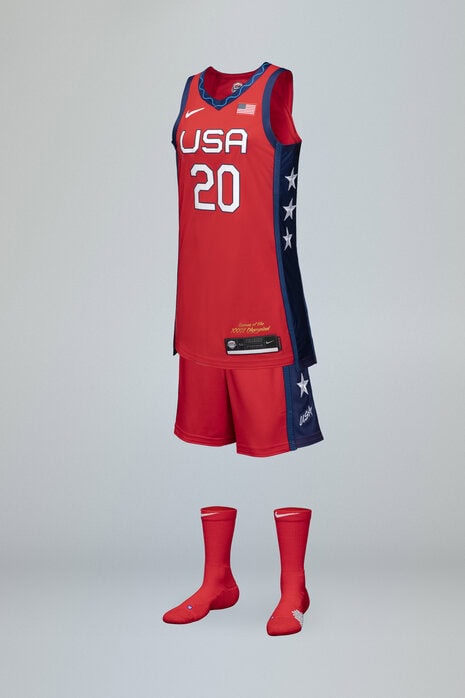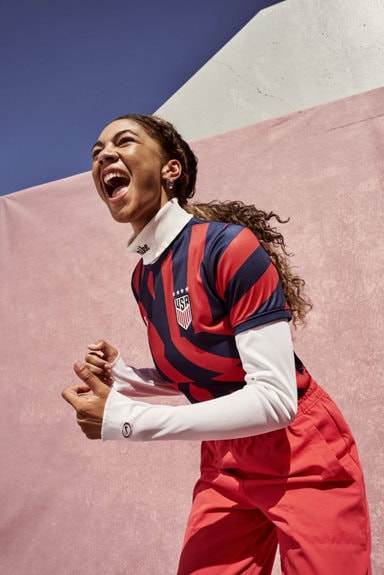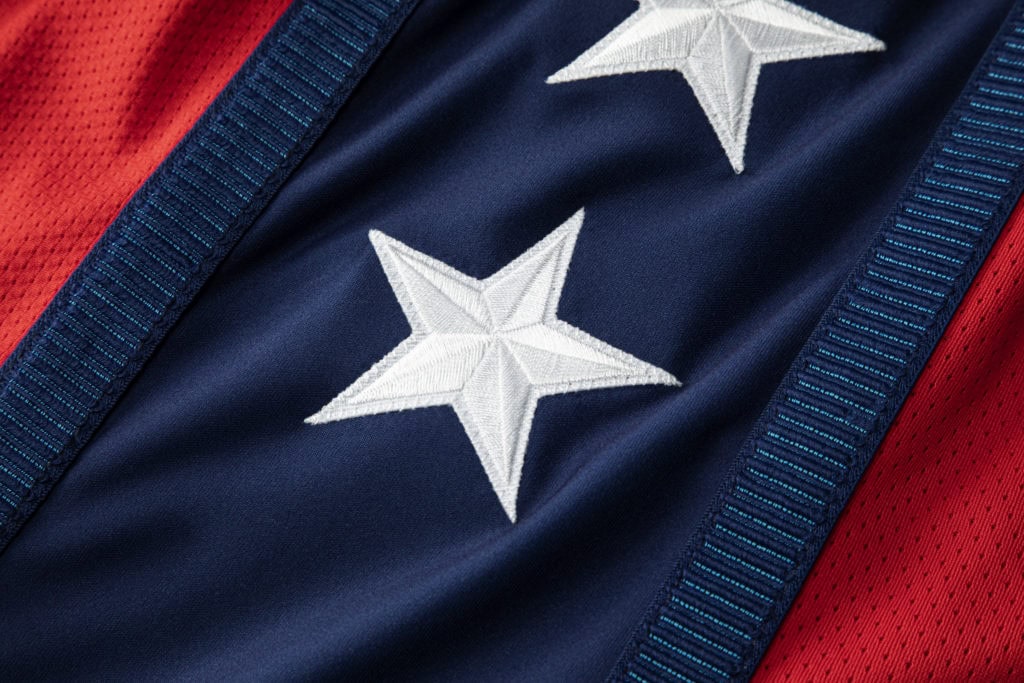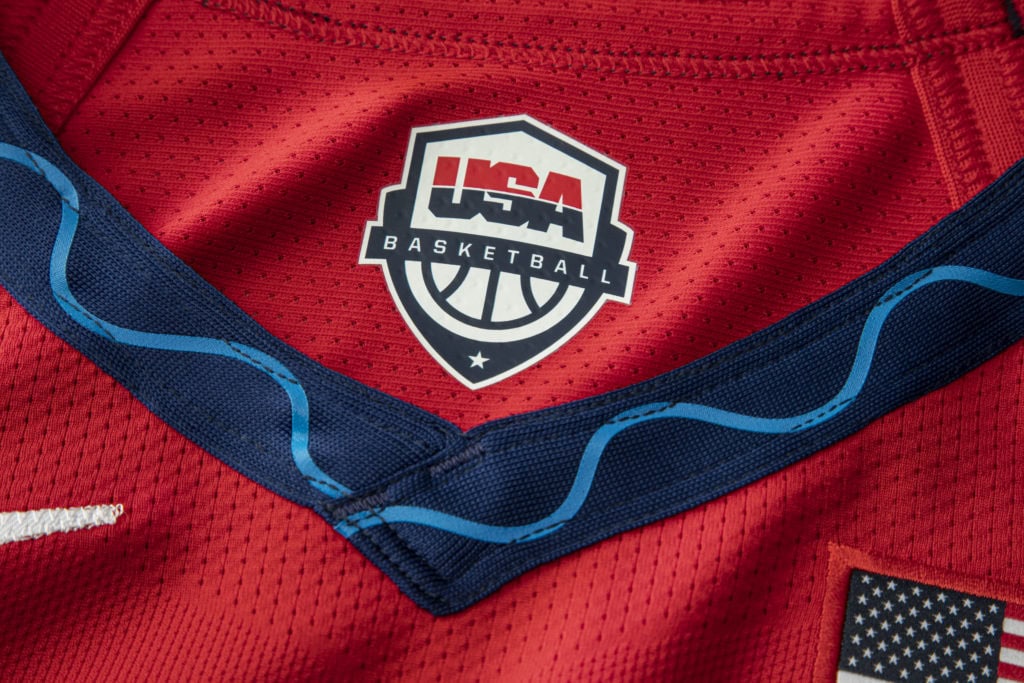Going behind the scenes of the Swoosh’s Tokyo looks for USA Women’s Basketball and the USWNT
On July 21, the US Women’s National Soccer Team opens Olympic play against Sweden. On July 27, Team USA Women’s Basketball tips off their campaign against Nigeria.
When they do, each will be decked out in new Nike uniforms meant to pay homage to their historic dominance over the years while putting them in the best position to add another successful chapter to their stories in Japan.
“We were really inspired by these two great dynasties in all of sports,” Tania Flynn, VP of Women’s Apparel Design at Nike, told Boardroom. “There’s so much storytelling to pull from considering their journey and their legacies that we represented in their uniform design.”

In all of Olympic lore, there’s really no legacy that compares to that of US Women’s National Basketball Team, which seeks an unprecedented seventh straight gold medal. Nike’s “Red Dynasty” uniform skees to capture the team’s multiple generations of success dating back to the watershed Atlanta Olympics in 1996 — and all the passion that comes with it.
“What we do best as a Nike design team is add that layer of storytelling,” Flynn said. “So if you think about the Women’s USA Basketball team, their away jersey is a red uniform that only they wear — the men’s US basketball team doesn’t have one — that really originated with the historic ’96 team that began this winning streak.”
The uniform’s design contains multiple references, some more subtle than others, to that breakthrough group that included the likes of Lisa Leslie, Dawn Staley, and Sheryl Swoopes.
“There are 12 stars to represent the 12 women on the team. There’s a USA script mark on the short that’s the same font and wordmark that was on the ’96 Olympic team’s uniform,” Flynn said. “There’s a light blue stripe that goes around the neckline of the jersey that really references an olive wreath and the early Olympic Games.”
As for the ballers that will actually be wearing the Red Dynasty look, there’s a profound appeal in being able to carry all that history onto the court in Tokyo.
“Now seeing that I have my own jersey, it’s definitely full circle. I never would have imagined this. So it’s pretty cool that we’re paying homage to the ’96 team, because those are the ones that really cracked that glass ceiling,” Team USA and Las Vegas Aces star A’ja Wilson said. “And now it’s up to us to shatter that thing. And I’m so happy that I’m a part of the shatter, because I’m all in there for that.”
Shattering ceilings has become an Olympic tradition for the women of USA Basketball. But while some things never change, there are technological innovations built into this uniform that weren’t exactly available 25 years ago.
“Part of that is our Nike Sports Research Lab. We’ve resourced NSRL in a way that really specifically focuses on the needs of women athletes. There’s the science piece, which we really geek out [on] using generative design and 4D design looking at the body in motion and being able to pinpoint where you need the most stretch. The most mobility. How you consider the heat of Tokyo and the sweat-wicking abilities, et cetera,” Flynn said.
“Then, there’s the athlete validation piece. You want to put it on the athletes and have them wear them and test them and really think about what their preferences are. What they feel comfortable in. And we make tweaks from there.”

Detail of the stars on the USA Women’s Basketball uniform representing the 12 members of the team 
Detail of the neckline of the USA Women’s Basketball “Red Dynasty” jersey
As Flynn explained, athletes’ input is crucial to any successful design, as Nike’s goal is to foster a personal, emotional connection between elite competitors and their apparel. But once a garment is finalized and a USA superstar dons it under the bright lights, you don’t want them to be thinking about what they’re wearing at all.
“It is about providing for them the best-performing, most personally expressive uniform, so that when they put those on, they feel like they can take on the world. That it’s an extension of themselves, and then they don’t think about it. They’re just out there doing what they do,” she said.
And it may be that no one understands that locked-in mentality better than Sue Bird and Diana Taurasi, who are each on the hunt for an incredible fifth gold medal.
“When you put the red jersey on, [there’s] the weight of it — not physical weight, but the weight of knowing that you’re representing your entire country. You’re representing the best of the best, but you’re also representing all the players that have put that jersey on before you,” Bird said. “It’s pretty special. It’s pretty crazy, and especially for me, because growing up, that was the ultimate goal — to be an Olympian. So the first time I put it on, that was me achieving something. Now, every other time after that, that’s me trying to prove something”
“You just can’t explain it,” added Taurasi. “You can play for UConn. You can play for the Phoenix Mercury. You can play for Ekaterinburg, the best team in Europe for the last 10 years, and I’ve gotten to do all that. And then the minute you put on that, that USA jersey, all that seems to not matter. You’re literally playing basketball for every single person who plays basketball in the States. That’s how I feel.”

On the soccer side of the Nike equation, the USWNT is in a scrappier kind of spot by comparison. They’ve won the last two World Cup championships in a row and boast four gold medals dating back to 1996, but skidded to a disappointing fifth-place finish at the 2016 Rio Olympics.
But the last thing the rest of the world needs is a US Women’s Soccer Team with some extra motivation.
And as they embark on a rare revenge tour this month, their garb will signal that the team we’re all about to see is not the one that fell short of the medal stand in Brazil.
It’s a remix.
“When we think about the US Women’s National [Soccer] Team, they have featured on their jersey four stars that represent four Olympic gold medals and four World Cup victories. And so their uniform design is a little bit more of a distorted, modern graphic take on the stars and stripes,” Flynn said.
In bringing its Olympic soccer designs to life, Nike collected insights from over 300 players and used cutting-edge digital visualization techniques to precision-engineer the look. The result is a uniform that’s 13% more breathable than previous editions, and that permits 10% more stretch and 55% faster wicking.
An iconic brand like the USWNT, which is likely witnessing one last Olympic hurrah from national heroes Carli Lloyd and Megan Rapinoe, deserves nothing less.
They’re two of the greatest dynasties in all of sports. Not women’s sports — all of sports. These women are bold, they’re expressive, they’re iconic, and they’re inspiring,” Flynn said. “I think that with the Women’s National [Soccer] Team and the USA basketball team, for individuals that haven’t been paying attention to them, it’s going to be amazing to see how they show up at the Olympics.”
Two global brands. Both historically great. But just as with Nike’s ever-evolving approach to apparel design,, perfection isn’t a destination — it’s motivation.
And the personal, emotional verve with which each team’s superstars represent themselves in Tokyo in pursuit of the perfect performance has infinite power to inspire new generations just as the iconic ’96 teams did for the current one.
“I think [they’re] going to inspire more people out there to get out and play who maybe otherwise wouldn’t,” Flynn said. “That positive influence in getting people, especially girls, more active, is a win-win for everyone.”

